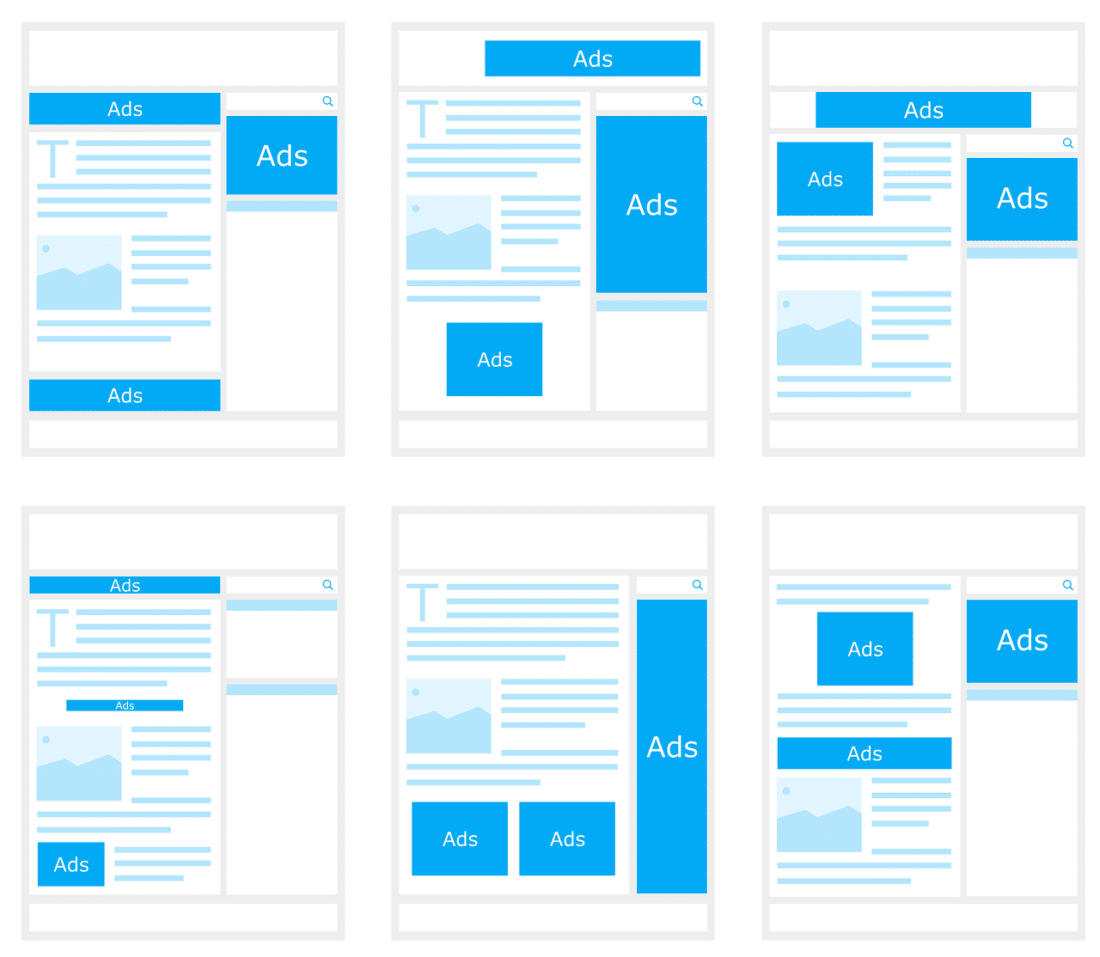For marketers, pop-up ads are an effective way to grab the visitor’s attention and encourage them to convert. However, these little windows are universally hated by internet users, to the point where their inventor has publicly apologized for creating them. Fortunately, when people claim to hate pop-ups, what they actually mean is that they hate bad pop-ups.
In this post, we’ll look at some of the reasons why pop-ups are so unpopular. We’ll then show you how to redeem this much-hated marketing technique and create high-converting pop-up ads. Let’s get started!
Why Pop-Ups Are So Unpopular (And Why You May Still Want to Use Them)
Pop-ups are windows that appear in a website’s foreground. They can take a variety of forms, including sidebar, banner, and full-screen pop-ups:
Many websites employ pop-ups as an advertising and marketing tool. For example, you might use pop-ups to capture leads by encouraging visitors to sign up for your mailing list:
Other sites use pop-ups to inform the target audience about a sale, or even offer an extra incentive for converting. For example, you might tempt visitors with an exclusive discount:
Despite their popularity among marketers, end-users are not so keen on pop-ups. In fact, the Nielsen Norman Group famously described pop-ups as the “most hated advertisement technique.”
It’s easy to understand why so many people hate pop-up ads. They literally pop up on the screen, interrupting whatever you’re doing. To make matters worse, they usually appear without the visitor’s explicit permission, meaning they’re often an unwanted interruption.
Poorly-implemented pop-ups can obstruct important content or features, and some may be difficult to close. In fact, Google penalizes sites that use intrusive pop-ups. This can be disastrous for your Search Engine Optimization (SEO) strategies.
However, when used correctly, pop-ups can help you create a more engaging and interactive website. According to research, the top 10 percent highest-performing pop-ups average a 9.28% conversion rate. Some pop-ups even boast an impressive 11% conversion rate. This suggests that these little windows can have a positive impact—you just need to use them carefully.
The Case for Pop-Ups: 4 Tips to Ace This Strategy
If you use pop-ups incorrectly, you may wind up scaring potential customers away, rather than convincing them to convert. With this in mind, here are four tips for a killer pop-up marketing strategy.
1. Use a Single Pop-Up per Page
With careful planning, you can create pop-ups that don’t irritate your visitors. However, even if you craft a killer call-to-action (CTA) and deploy your message at exactly the right moment, it’s important not to get carried away. This means you’ll want to avoid displaying multiple pop-ups on the same page.
Visitors may be willing to forgive the occasional unwanted marketing message. However, if you bombard them with subsequent pop-ups, they may quickly lose patience with your website.
Many people also associate persistent ads with scammers. Malicious websites will often hammer visitors with pop-ups in an attempt to trick them into downloading viruses. If you display multiple pop-up ads per page, potential customers may start to question your website’s trustworthiness.
2. Consider the Context
To drive conversions, you’ll need to offer visitors something they want. While it’s impossible to read a person’s mind, you can often identify the content they’re interested in based on the actions they take on your site.
Let’s look at an example. If someone visits your store’s pre-orders page, then they might be interested in joining your mailing list. In this scenario, you can display a newsletter pop-up that promises to keep the visitor informed about upcoming releases.
Linking your pop-up to the content on the page can also be a powerful way to encourage conversions. For example, the page can push the visitor towards a specific action. You can then deploy a pop-up that makes it easy for them to perform this task.
3. Place the Exit Button Within Easy Reach
Often, visitors will want to exit your pop-up without taking action. People typically close a pop-up by clicking on the little X in the upper-right corner:
However, far too many websites deliberately make this button difficult to find. This may include placing the exit icon in an unexpected location, using a color that blends into the pop-up’s background, or even sizing the window so that the X appears offscreen.
This is a surefire way to make visitors distrust your website. If it’s practically impossible to close your pop-up, most people will likely exit your site and go to your competitors.
To avoid losing out on potential customers, it’s wise to put the X button in the upper-right corner, where people generally expect to find it. You may also want to consider using contrasting colors to make sure that the exit icon stands out from the rest of your content.
4. Test Your Pop-Ups on Mobile Devices
Poorly-designed pop-ups can be frustrating on the desktop. However, for smartphone and tablet users, pop-ups can easily take up the entire screen.
Over 90% of the global internet population use a mobile device to go online. With this in mind, you cannot afford to alienate your mobile audience.
For this reason, it’s vital that you test all of your pop-ups on mobile devices. In particular, you’ll want to ensure that the exit icon is visible on these smaller screens, and that it’s easy to interact with. You may need to change its position, or increase its size for mobile users.
Pop-ups can even impact your site’s performance. This is particularly true on mobile devices, which typically have less horsepower compared to desktop computers. If a pop-up causes your site to become laggy or unresponsive, you may want to consider redesigning that pop-up to use fewer resources.
Conclusion
Pop-up ads are generally disliked by web users. However, with careful planning and management, you can create pop-ups that actually provide value to the visitor. By displaying helpful and relevant ads at just the right moment, you can boost your conversions without scaring away potential customers.
Do you have any questions about how to design more engaging pop-ups? Let us know in the comments section below!





Join the conversation